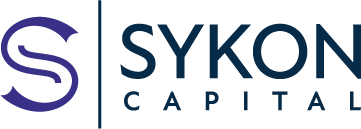Debt vs. Investment: A Strategic Guide to Optimizing Your Financial Decisions
One common query from both clients and prospects is whether they should prioritize paying off their debt or investing their money. This guide delves into the nuances of debt and offers practical rules of thumb to help you decide your next steps in the financial planning journey.
Understanding Debt
First, it's important to establish that debt is not inherently negative. Used wisely, debt can be a vital element of a well-rounded financial strategy. Consequently, we do not advocate for a debt-free lifestyle solely for its own sake.
Debt can be categorized into two main types: secured and revolving. Secured debt includes mortgages, car loans, business loans, and home equity lines of credit (HELOC), where the borrowed amount is backed by collateral. On the other hand, revolving debt, such as personal loans and credit cards, relies on your creditworthiness without specific collateral backing.
Assessing Your Loans
It's crucial not to use secured debt to pay off unsecured debt. For instance, using a HELOC to clear credit card debt can be risky, as defaulting on the latter has less severe immediate consequences than defaulting on a debt secured against your home.
Calculating Effective Interest Rates
Interest rates on loans should be compared to the potential returns from investments. Consider the following scenario:
- Current 3-month T-Bill Rate (Risk-free rate): 5.3%
- Historical Return of the MSCI All-Country World Index from 1987-2024 (Risk Assets): 7.83%
- Credit card: 20% APR
- Student loan: 5% APR
- Mortgage: 3% APR
- HELOC: variable 9% APR
- Auto loan: 2% APR
- Income tax & short-term Capital Gains = 20%
- Dividend & Long-term capital gains =15%
If your mortgage interest can be deducted from your income taxes, the effective interest rate is now 2.4% (3% x 0.80). The HELOC is now 7.2% and the student loans are 4%.
We have to adjust the rates of return by potential tax implications as well. The 5.3% interest on the risk free rate will be reduced by the income tax level of 20%. So 5.3% becomes 4.24%. The risky asset return of 7.83% can be calculated as follows: 20% of return from income and short term gains and 10% from long term gains. This will reduce the return to 7.4%. (7.83% x 0.2 x 0.8 = 1.25) + (7.83% x 0.10 x 0.85 = .67) + (7.83% x 0.7= 5.48).
Now, lets assume you have a traditional 60/40 portfolio.
60% risky asset attribution = 7.4% x 0.6 = 4.44%
40% risk free asset attribution = 4.24% x 0.4 = 1.7%
Total expected return = 6.4% (1.7% + 4.44%)
Now we can stack rank our debt relative to the return:
1) Credit Card loans with a 20% APR
2) Home Equity Line of credit with an adjusted rate of 7.2%
3) Portfolio Expected rate of return at 6.14%
4) Student loan adjusted interest rate of 4%
5) Mortgage adjusted interest rate of 2.4%
6) Auto loan at 2%
Allocating Your Cash Flows
Your cash flows can now follow this stack ranking system. You allocated the minimum cash flows to each category with all the excess flow going to the top ranked category. Here is an example.
You have total income of $5000 a month and $3500 a month of this income in excess of your tax, food, utility and discretionary expenses.
- Mortgage payment is $1000 month.
- Auto loan is $400 a month.
- Student loan payments are $500 a month.
- 401K match is up to 4% of your income, so you contribute enough to get the match, $200 a month.
- The HELOC payments are $200 a month.
- Credit card minimum payment is $100 a month with a $5000 balance
1. Pay off your credit card.
2. Then the home equity line of credit.
3. Then into extra savings in your 401K until that is maxed out.
If you acquire new debt or your credit card has a balance, you just keep going down the stack rank chart. This will help guide you towards minimizing interest costs over the long term with your loan and ensuring that when you are saving, it is not at a negative real return rate.
Conclusion
Managing your debt and investment decisions requires a balanced approach. Utilize this guide to understand your options better and prioritize your financial actions wisely. For personalized advice and assistance in creating a stack rank chart tailored to your financial situation, please reach out to us. We’re here to help you optimize your financial decisions for a better future.
